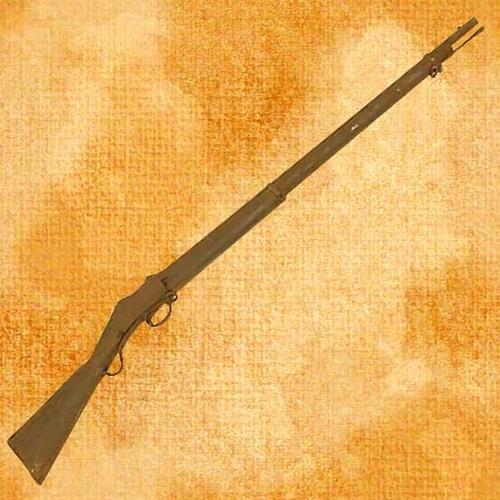A weapon of the Empire: The Martini Henry Rifle
15th Apr 2016
It is hard to call the Martini Henry Rifle just a rifle with specifications. It was a breech-loading single-shot lever-actuated rifle which had served the British Empire extensively for 30 years, unlike the muzzle-loading Snider-Enfield which it replaced. A breech loader like this could be loaded and fired much faster than a muzzle loader, and a soldier with a Martini Henry could fire 20 shots a minute. It had an effective range of 400 yards (370m) and a maximum range of 1,900 yards (1,700 m). The rifle is named after Friedrich von Martini, a Swiss engineer and Alexander Henry, a Scottish gunsmith. The Martini Henry Rifle was the standard issue weapon for the British army since 1871 right up to 1889, covering significant historic events such as the Second Afghan War, The Zulu Wars and the Boer War. When so much history is packed into a weapon, it isn’t difficult to see why the Martini Henry Rifle is viewed as an icon or symbol of an era, and why it is frequently referred to as “a weapon of Empire.”

The Martini-Henry was deployed in World War I in a variety of roles, mainly as a reserve arm. In the early years of the war it was also issued to aircrew for attacking observation balloons and aircraft with newly developed incendiary ammunition. The rifle was also adopted very popularly by the Native Auxiliary troops in the African and Middle Eastern theatres during World War I. In the novel The Man Who Would be King, two British adventurers use 20 Martini-Henry rifles to establish their own kingdom in Kafiristan. The rifles also find a mention in Rudyard Kipling’s poem The Young British Soldier. So yes, when we are talking about the Martini Henry Rifle it is tough not to get blown away.
There were subsequent variants of the rifle down the years, like the Martini-Enfields or Martini-Metfords, which adopted other rifling patterns such as the Metford System or an Enfield system. The three main variations of the Martini-Henry Rifle were the Mark II, III and IV. Certain sub variations were commonly referred to as Patterns. A number of young military cadets were also trained on much smaller, lighter versions of the Martini-Henry called Martini Cadets, which resembled the Mark IV and were created only for this purpose. The Martini subsequently survived many years as a Home-Guard and second class weapon of the British and Colonial Armies.
Where can I buy a Martini Henry?
Although Martini Henry have become scarce in recent years and prices have almost doubled, there are manufacturers and collectors that offer some of the most authentic, original and untouched Martini Henry rifles. If you end up buying an “Arabicized” Martini Henry in countries like Afghanistan, chances are you are buying a local variant of the original called the “Khyber Pass Copy” made by local artisans in Afghanistan. These clever duplicates try and copy even the stampings and markings from the original but give themselves away through backward letters and misspellings. One very common typo is to have the “N” in “Enfield” backwards. If you already have one, then probably you would like collecting the Martin Henry Brass Oiler with Factory Markings from Atlanta Cutlery.


 Gift Cards
Gift Cards